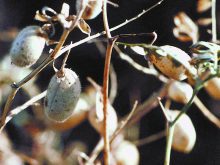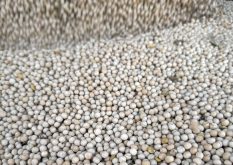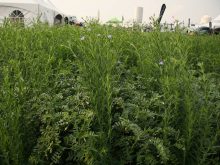SASKATOON — The United States could be sitting on a massive stockpile of kabuli chickpeas by the end of the 2024-25 crop year, says an analyst.
Farmers in that country planted 529,900 acres of chickpeas, a 42 percent increase over the previous year, according to the USDA’s Farm Service Agency.
Related stories:
The breakdown by class is 389,870 acres of large kabulis, 130,022 acres of small kabulis and 11,839 acres of desi chickpeas.
Read Also

Fertilizer method’s link to emissions studied
A researcher says others studying greenhouse gas emissions aren’t considering how the loss of nitrogen into the atmosphere correlates with fertilizer application or if there is an impact to yield.
If yields are at their five-year average, production could more than double to 472,700 tonnes from 214,189 tonnes last year, according to Stat Publishing.
“Improved domestic supplies would be expected to reduce the quantity of chickpeas imported from Canada and Mexico, while creating the need for the U.S. to vastly expand exports from an estimated 80,800 tonnes in 2023-24 to a forecast 192,500,” said Stat.
Canada exported 150,000 tonnes of kabuli chickpeas in 2023, according to the Global Pulse Confederation’s Pulse Atlas data.
The U.S. was the largest customer, importing 51,000 tonnes, followed by Turkey at 32,000 tonnes and Pakistan at 26,000 tonnes.
That is why Stat is concerned that U.S. farmers are poised to harvest such a big crop. It means potentially less demand for Canada’s crop and more competition in the export arena.
Even with a doubling of its export program, the U.S. faces the risk of a “massive buildup” in kabuli chickpea carryout supplies.
“They could leap from this summer’s estimated 60,000 tonnes to a potential 230,000 a year hence,” said Stat.
That would likely result in a “major decline” in plantings in the U.S. and possibly Canada as well in 2025, especially with the corresponding rise in kabuli chickpea production in Russia, said Stat.
Statistics Canada thinks Canadian growers planted 454,480 acres of chickpeas, a 44 percent increase over last year. MarketsFarm analyst Bruce Burnett says that sounds about right.
Agriculture Canada is forecasting an average yield of 1.69 tonnes per hectare, a 50 percent improvement over last year. Burnett thinks that might be optimistic.
“Given where (chickpeas) have traditionally been grown, you’d have to think we suffered some stress there and our yields are going to be hurt by it,” he said.
That region is southwestern Saskatchewan, which is one of the driest areas of the Prairies this year.
He believes average yields will be better than last year, but production will likely be lower than the 305,000 tonnes Agriculture Canada is forecasting.
“I don’t think it’s going to make a material difference,” said Burnett. “We’re still going to have lots of supply.”
That means Canada and the U.S. will likely be competing in export markets around the world.
“We’ll probably see some price pressure here,” Burnett said.
Mexico is the other big player in North America’s kabuli chickpea market.
“Mexico continues to maintain high asking prices for large caliber kabuli chickpeas in a reflection of tight inventory levels relative to prospective export demand,” according to Stat.
That is due in part to limited exportable supplies of all classes of chickpeas from India.
India’s kabuli exports were 98,300 tonnes during the first half of 2024. That is down from 129,000 tonnes in the same period one year ago.
Contact sean.pratt@producer.com


















